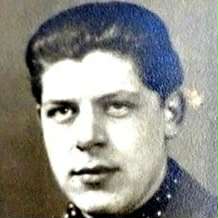
1925 - 1949
Berthold Wehmeyer
Summary
Name:
Berthold WehmeyerYears Active:
1947Birth:
June 07, 1925Status:
ExecutedClass:
MurdererVictims:
1Method:
StrangulationDeath:
May 11, 1949Nationality:
Germany
1925 - 1949
Berthold Wehmeyer
Summary: Murderer
Name:
Berthold WehmeyerStatus:
ExecutedVictims:
1Method:
StrangulationNationality:
GermanyBirth:
June 07, 1925Death:
May 11, 1949Years Active:
1947bio
Berthold Wehmeyer was born on 7 June 1925 in Germany. He was trained as a locksmith but had early brushes with criminal activity. By the age of sixteen, Wehmeyer had already been convicted of robbery, an indication of his early propensity toward violence and disregard for the law. He came of age during the final years of the Nazi regime and lived through the immediate postwar chaos in Germany, a period marked by hunger, economic collapse, and black-market trading. Like many others in the years following World War II, Wehmeyer engaged in barter trips—known in German as “Hamsterfahrten”—in which urban residents traveled to rural areas in hopes of exchanging goods for food.
At the time of the crime in 1947, Wehmeyer was living in Berlin, which was still recovering from wartime devastation and operating under Allied occupation. Amid the uncertainty and lawlessness of this era, Wehmeyer’s violent tendencies escalated. He was described in later psychiatric evaluations as a “coarse violent offender” with an “unusual sexual drive,” marking him as psychologically unstable and likely to commit further acts of violence. His behavioral pattern, combined with his criminal record, suggested a high-risk individual whose path eventually culminated in a brutal crime.
murder story
On 22 April 1947, Berthold Wehmeyer and an unnamed companion set off from Berlin on a so-called "hoarding trip" to the Prignitz region in postwar Germany. This was a common survival practice during the hunger years, where Berliners attempted to barter valuables for basic food staples. In Wusterhausen, they met 60-year-old Eva Kusserow, also from Berlin-Weißensee, who was likewise on a hoarding trip. On the following evening, 23 April 1947, after Kusserow had successfully bartered her goods for 20 kilograms of potatoes, the two men encountered her again.
Driven by greed and sexual violence, Wehmeyer and his companion attacked Kusserow. They raped her and then strangled her to death in order to steal her potatoes. After the murder, the men hid her body in a field near Wusterhausen. Kusserow's remains were discovered five days later, on 28 April 1947.
Shortly after the discovery of the body, both Wehmeyer and his accomplice were identified as suspects by the Berlin criminal police and were arrested. Due to limited forensic technology at the time, the authorities could not definitively determine which of the two had committed the actual murder, as each blamed the other. However, Wehmeyer's accomplice later retracted his earlier confession and, along with his wife, placed full blame on Wehmeyer. This claim, combined with Wehmeyer’s psychiatric assessment, which characterized him as a dangerous and sexually deviant individual, ultimately led to his conviction.
On 5 July 1948, Wehmeyer was sentenced by a Berlin jury court to death for murder and to an additional five years in prison for rape. The charges were based on the Reich Criminal Code of 1871, which was still in force in postwar Berlin, excluding its state protection provisions. The co-defendant was convicted as an accessory to murder and sentenced to six years in prison.
Wehmeyer's appeal was denied, and his plea for clemency was unsuccessful. A planned execution on 10 May 1949 was delayed when his lawyer submitted a new witness and requested a retrial, which was immediately rejected. On the morning of 11 May 1949, Berthold Wehmeyer was executed by guillotine in the Lehrter Straße cellular prison in West Berlin.
Notably, Wehmeyer's execution occurred just days after the Basic Law of West Germany was passed on 8 May 1949, which constitutionally abolished the death penalty. However, this law had not yet taken effect—it would only be ratified on 12 May and come into force on 23 May 1949. Since Berlin held a special status under Allied control, West German constitutional provisions did not immediately apply there. As a result, Wehmeyer remains the last person executed under German law in what would become West Germany, excluding East Germany. After his execution, capital punishment was gradually phased out in West Berlin and was officially abolished by the West Berlin Senate, in agreement with the Western Allies, in 1951.